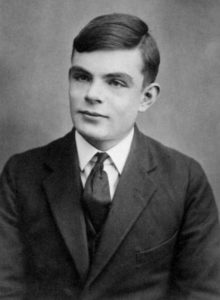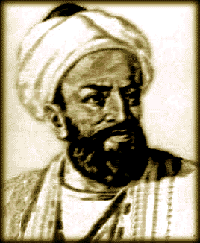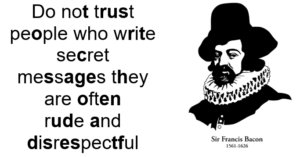Tasks
|
Turn the wheel to find a secret message. The message is written line-by-line. |
|
This type of code is called a “grille cipher”. Can you make a grille cipher of your own? |
|
Can you devise your own way to send a secret message? |
|
Maths
There are three main ways to send secret messages:
- Codes turn words or sentences into other words or sentences, for example “attack at dawn” might become “black eagle”. Codes are like a secret language and need a code book so you can translate phrases.
- Ciphers turn letters into other letters, shapes or symbols. For example, if we wanted to say HELLO we could replace each letter with the next letter in the alphabet so the message becomes IFMMP. Ciphers need a “key” so you know which letter becomes which in the secret message.
- Steganography is a way to hide messages in plain sight. For example, in our exhibit, it looks like we have lots of random letters, but when you place the grille on top of the letters you can read a secret message. There are many ways to send hidden messages.
|
History
Steganography has been used for thousands of years. In ancient Greece the Spartans would take a slave, shave their hair off and tattoo a message on the slave’s head! They would then let the hair grow back to hide the message.
In the 20th century spies sometimes used “microdots” – these were messages that could be shrunk down and hidden in the dot of an “i” of a regular message. The secret message could only be read with a microscope.
Today we can hide messages in digital images by changing some of the 1s and 0s that make up the image. The changes are so small that no one would notice.
|
People
 Alan Turing 1912 – 1954 Alan Turing 1912 – 1954
Alan Turing was a mathematician and code breaker. In World War II Turing and others broke the German Enigma code. At school, Turing’s favourite code was the grille cipher, and he would send secret messages to his friends by placing a grille on the page of a book. |
 Al-Kindi 801 – 873 Al-Kindi 801 – 873
Al-Kindi was a philosopher and astronomer from 9th century Baghdad. Al-Kindi realised that some letters are popular and some letters are rare and that you could use this as a clue to break codes. This is one of the first ever uses of statistics. |
|
Applications
We use codes whenever we need to send secret messages. These might be secret personal messages to friends, or secret military instructions, or whenever you are using your credit card to buy something on the internet. Our whole modern world depends on codes.
Steganography is a way to hide messages in plain sight. For example, digital images are made from 1s and 0s. We can then change some of those 1s and 0s to hide a secret messge in the image, but the change is too small to see. Film studios use this idea to hide information in movies as a way to stop movie piracy.
|
Maths at Home
The Bacon cipher allows you to hide messages in plain sight using two different fonts.
Replace letters in bold with 1, and all other letters with 0. Then each group of five letters is a binary number. If A = 00001, B = 00010, C = 00011 etc, what is the hidden message below?

The Bacon cipher was invented by the scientist Sir Francis Bacon as a way to send secret messages. In the early days of the printing press it was common to see things printed in two fonts.
|